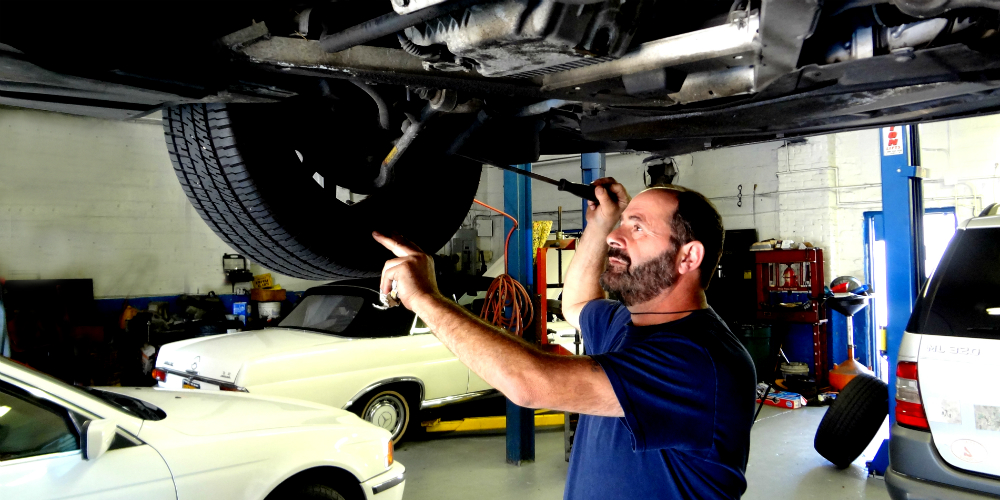All Categories
Featured
Correct tire maintenance is crucial to prolonging the life of your lorry and ensuring a smooth and secure driving experience. Two of the most important tire solutions are tire turning and positioning. These services not just avoid early tire wear however additionally improve handling, gas efficiency, and general safety and security. If you're unknown with what tire turning and alignment entail, here's an extensive take a look at why they matter and exactly how they profit your automobile.
What Is Tire Rotation? Tire turning refers to relocating your tires from one placement to another to ensure they use equally. The factor tire turning is needed is since not all tires wear the same method. In front-wheel-drive automobiles, for instance, the front tires manage both guiding and power, that makes them wear faster than the back tires. Likewise, the back tires use in different ways in rear-wheel-drive and all-wheel-drive lorries.
By revolving your tires frequently, you can cancel the wear throughout all 4 tires. This helps them last longer and enables more even grip, enhancing handling and security. Most makers recommend turning your tires every 6,000 to 8,000 miles or based on the vehicle's guidebook.
What Is Tire Placement? Tire positioning, also called wheel positioning, describes the procedure of adjusting the angles of your auto's wheels to fulfill the maker's specifications. The objective of placement is to ensure that all four tires are pointing in the best direction and at the proper angles, which permits optimum handling, security, and tire life.
There are three main alignment angles that are adjusted throughout a positioning check:

Camber: The tilt of the wheels when checked out from the front. If the camber is off, it can cause irregular tire wear, as the tire will certainly not make full call with the roadway surface area. Caster: The angle of the steering axis when watched from the side. Correct caster positioning makes certain that your vehicle is secure when driving straight which your steering wheel go back to its regular placement after a turn. Toe: The angle at which the tires aim internal or outward when watched from above. Incorrect toe alignment can trigger the tires to drag, causing uneven wear and minimized fuel efficiency. Imbalance can occur over time because of regular driving or from hitting barriers like visuals or fractures. If your placement is off, it is very important to get it examined and dealt with to avoid issues in the future.
Why Tire Turning and Positioning Issue. Enhanced Tire Life:. Routine tire rotation makes sure also tire wear, helping you obtain the most gas mileage out of your tires. Irregular wear can trigger you to change tires prematurely, which can be costly. When your tires use equally, they last longer, conserving you cash in the lengthy term.
Improved Vehicle Handling:. Proper alignment maintains your vehicle driving straight and steady, particularly at higher rates. Misalignment can cause your auto to pull to one side, making it more difficult to steer. By maintaining your tires lined up, you ensure your car takes care of more efficiently and naturally.
Improved Safety:. Tires that are not rotated or aligned properly can wear unevenly, affecting just how well your lorry quits and corners. Misaligned tires or tires with unequal wear patterns might cause reduced traction, particularly in damp or icy problems, leading to a higher risk of accidents.
Better Fuel Efficiency:. Tires that are misaligned can develop moving resistance, suggesting your engine has to work harder to relocate the automobile. This boosts gas usage and reduces your auto's gas effectiveness. Appropriate tire positioning lowers rolling resistance, which can enhance gas mileage.
Signs Your Tires Required Turning or Alignment. While it's necessary to remain on top of regular tire rotations and positionings, there are a few signs that may indicate your tires need attention:
Uneven Put On: If you discover that tire is extra worn than the others, it's most likely time for a turning. Steering Pull: If your vehicle pulls to one side or feels off-center, maybe an indication of imbalance. Vibrations: If you really feel vibrations in the guiding wheel or the auto, it could be as a result of an alignment problem. Noisy Tires: Screeching or loud tires might indicate incorrect rotation or imbalance. If you see any one of these indications, it is very important to obtain your tires inspected by a professional.
How Usually Should You Revolve and Straighten Your Tires? Tire turning need to generally be done every 6,000 to 8,000 miles, though this can differ based on your driving conditions and the kind of lorry you drive. It's additionally a great idea to have your tires revolved whenever you obtain an oil modification.
For positioning, you must have your tires straightened every 1-2 years, or more regularly if you see any problems with taking care of or irregular tire wear. If you struck a big hole or visual, it's smart to obtain an alignment inspect as soon as possible.
Conclusion: Normal Maintenance for Optimal Performance. Tire turning and placement are 2 basic however crucial solutions that maintain your vehicle running smoothly, efficiently, and safely. By revolving your tires frequently and maintaining your wheels properly aligned, you can expand the life of your tires, improve handling, and appreciate better fuel effectiveness. Don't wait on your tires to reveal indications of wear-- timetable regular maintenance to keep your cars and truck in leading shape. Regular tire treatment is a financial investment that pays off in the long run, maintaining you and your passengers safe when driving.
Latest Posts
Untitled
Discover Affordable Design at Bare Bones Furniture in Glens Falls
Metro Detroit's Bathroom Fitter: A Quick Deal With for Tired Shower Rooms
